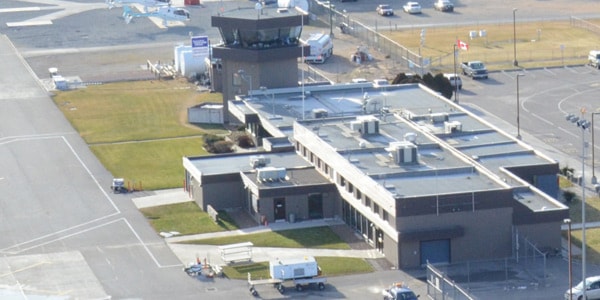After her travel plans were buried by a snow storm, a Penticton woman is now considering booking future winter travel out of the Kelowna airport.
Her concerns are well-founded, according to the head of Tourism Penticton, which has been tasked by the city with enhancing service at an airport that has seen two recent upgrade projects delayed indefinitely.
Manisha Willms was scheduled to fly home from Vancouver on Jan. 4, but the trip was cancelled by Air Canada due to poor weather in Penticton.
She was initially rebooked to fly home on Jan. 5, but that trip was also cancelled, so Willms took matters into her own hands and caught a plane to Kelowna.
“All the flights were on to Kelowna, and seemingly none of them were on to Penticton,” she said.
The itinerary changes left her out of pocket the $250 she spent on a hotel in Vancouver and a shuttle bus to Penticton, and she’s now thinking about doing her winter flying out of Kelowna.
“It’s a hassle and it’s too bad, but absolutely in the winter months. I don’t think (the Penticton airport has) the same issues during the summer months,” said Willms.
Air Canada cancelled 20 of 41 scheduled flights between Penticton and Vancouver last week due in part to weather conditions. WestJet Encore also cancelled some of its once-daily trips between Penticton and Calgary, and reportedly transferred some passengers by bus to Kelowna to begin their trips east.
Neither airline responded this week to requests for comment on the cancellations.
But flying unfriendly skies around Penticton was supposed to be made easier with the creation of an approach path that would allow pilots to use co-ordinates from a global navigation satellite system to help land safely and eliminate the need to rely on visual cues that can be obstructed by low cloud coverage.
Nav Canada, a private corporation that operates the country’s civil air navigation service, expected the project be done by the end of 2014, but it was never completed and there’s no timeline to finish it.
“The work is difficult and it’s ongoing and we’re assessing the feasibility of this,” said Nav Canada spokesman Ron Singer.
Besides the overdue approach, a Transport Canada project to expand the boarding lounge at the Penticton airport to accommodate higher passenger volumes hasn’t materialized either.
That renovation work was expected to begin in late 2014, but never got underway because the tender was “unsuccessful,” an agency spokesperson said in November.
Delays on both projects are worrisome for the executive director of Tourism Penticton, which is trying to raise the profile of YYF and attract more flights.
“We’re working on marketing the airport and this throws up some roadblocks for us. It’s a big concern,” said Chris Bower.
He’s planning to approach the federal government to find out what side-tracked both projects, but in particular the GNSS approach that would be of most benefit during cloudy winter months.
“We were expecting to see that finished,” said Bower.
Update: January 16, 2015:
In an email received after press deadline, WestJet spokeswoman Brie Ogle confirmed the company has had issues with low ceilings in Penticton, but is working on a solution:
“Just after we started service into Penticton, the instrument approach we use was amended that affected the approach limits. This amendment was due to changes in approach design criteria that benefit the aviation community as a whole, and we understood the decision. This change meant that WestJet Encore adopted slightly more conservative operating procedures to ensure safety is never compromised.
“Safety is our top priority and this is the most prudent way of operating at a new airport, particularly one where low ceilings are not uncommon during the winter months.
“That said, we have completed designing a new GPS based approach into YYF that will allow us to land more consistently under poor weather conditions and that approach is now making its way through the federal approval process. Hopefully, we’ll have it soon.”
